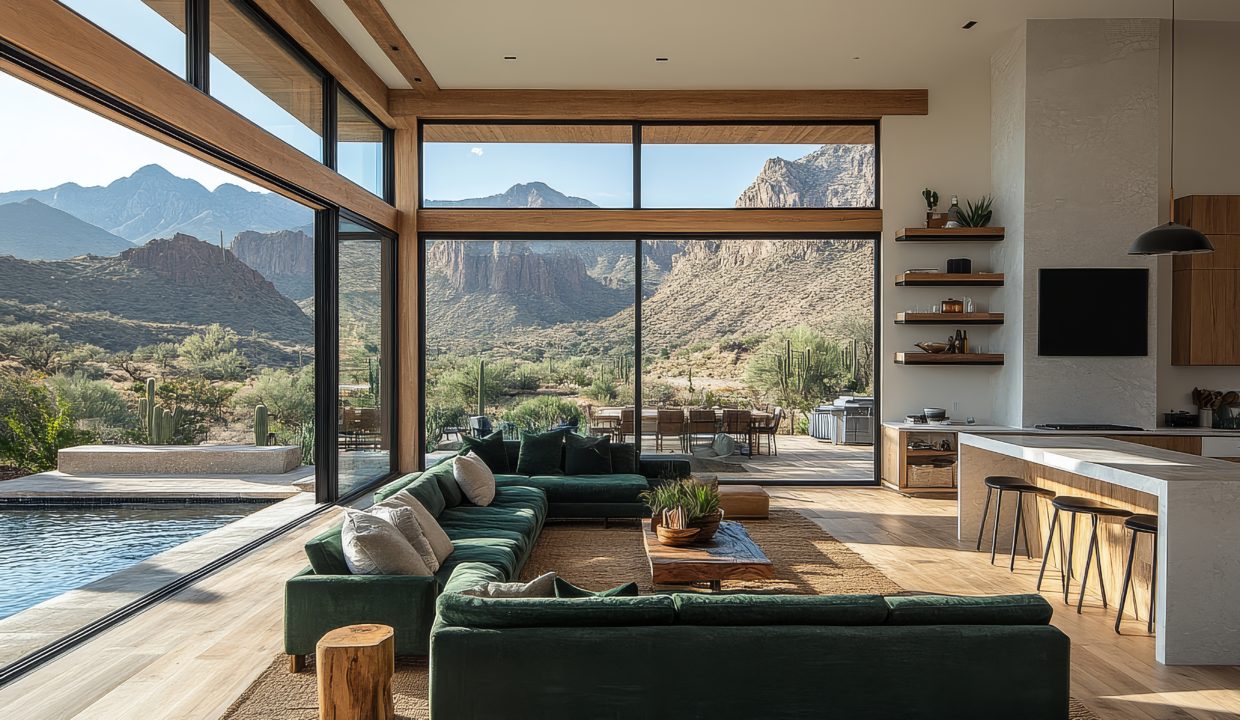
1. Introduction: The Timeless Appeal of Minimalism
In recent years, the minimalist style has become a true movement in interior design and real estate. More and more buyers—especially in dynamic, sought-after areas like Ticino—look for homes furnished with clean lines, quality materials, and functional spaces.
Living in a minimalist home doesn’t mean living in an empty or impersonal place; it means choosing an environment that conveys order, calm, and well-being. In a competitive property market, presenting a home styled in a minimal way can tip the scales by increasing perceived appeal and value.
2. The 7 Key Elements of Successful Minimal Styling
- Neutral, light palette. Start with color. Neutrals—white, light gray, beige, taupe—do the heavy lifting, while black or graphite works as a refined accent. Light walls reflect daylight, visually expand space, and make rooms feel welcoming.
- Essential, multifunctional furniture. Every piece serves a purpose. Extendable tables, linear sofas, storage beds, or modular systems optimize space without sacrificing practicality.
- Subtle detailing. Minimal thrives on restraint: smooth fronts, integrated pulls, monochrome textiles. Decorations are few, letting form and materials speak.
- Natural light and layered lighting. Make daylight the star with large openings and sheer fabrics. After dark, layer ambient, task, and accent light to create warmth and depth.
- Well-organized spaces. Order is non-negotiable. Built-ins, hidden shelves, and storage furniture keep surfaces clear and clutter at bay.
- Natural materials & refined textures. Minimal is not cold. Light wood, stone, glass, and tactile fabrics like linen or cotton add warmth and balance.
- A measured personal touch. One abstract artwork, a green plant, or a geometric vase can express personality—without breaking the harmony.
3. How to Apply the Look, Room by Room
- Living area. Bright and welcoming: a clean-lined sofa, a low table, and a modular bookcase are enough to define the space. Keep décor to a few iconic pieces.
- Kitchen. Favor seamless surfaces, integrated appliances, and a unified color scheme. Keep counters clear to emphasize function and modernity. (In small kitchens, reduced-depth cabinetry can boost circulation and visual calm.)
- Bedroom. Think relaxation: low bed, neutral textiles, handle-less wardrobes, and soft lighting for a restful feel.
- Bathroom. Wall-hung fixtures, walk-in showers, and smooth-front storage define minimal baths. Neutral hues and natural finishes keep them elegant and timeless.
4. Why Minimal Styling Helps in Real Estate
Minimal styling isn’t just aesthetic—it’s strategic:
- Modern appeal for buyers sensitive to contemporary design.
- Perceived space: light colors and essential furniture make even small apartments feel larger.
- Easier upkeep thanks to fewer decorative elements.
- Higher perceived value & faster sales: staging helps buyers visualize the home and is linked to quicker sales and offer uplifts, according to the National Association of Realtors.
5. Common Mistakes to Avoid
- Too many colors: stick to a coherent palette.
- Too much furniture: minimalism is less is more.
- Neglecting lighting: even great design falls flat without layered light.
- Materials that feel cold: balance with wood, texture, and textiles.
6. Conclusion: Comafim’s Role
Styling a home minimally turns essentials into elegance. It’s more than a look—it’s a tool to improve daily life and enhance property value. In Ticino, where design and comfort matter, minimal style is a winning choice for selling, buying, or elevating a property. Comafim guides clients end-to-end—pairing function, modernity, and refinement—so every home becomes a unique, distinctive space.





